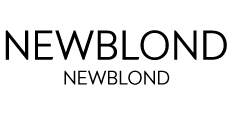What Is an Information Portal?
An information portal functions as a centralized digital platform designed to aggregate, organize, and deliver data access to users. Unlike traditional online resources, these portals streamline complex information into a user-friendly interface, enabling efficient navigation and retrieval. Whether for businesses or individuals, an information portal serves as a one-stop solution for accessing diverse content, from industry reports to real-time analytics.
Key Features of Modern Information Portals
Modern information portals prioritize seamless integration of tools and data sources. They often include customizable dashboards, search functionality, and role-based access controls. A strong digital platform ensures secure data access while maintaining scalability. These portals also support multimedia content, interactive widgets, and APIs to connect with external systems, enhancing their versatility as online resources.
Why Information Portals Are Essential Today
In an era of information overload, portals act as critical gateways to reliable data. Organizations rely on them to centralize internal communication, while consumers use them to discover curated content. Their ability to simplify complex data access makes them indispensable across sectors, from healthcare to education. As digital transformation accelerates, the demand for robust information portals continues to rise.
How Information Portals Enhance User Experience
A well-designed information portal prioritizes a user-friendly interface, reducing friction in data retrieval. By consolidating fragmented information into a single destination, it minimizes time spent searching across multiple platforms. Features like personalized recommendations, intuitive navigation, and mobile compatibility further elevate the experience, making these portals vital for both casual users and professionals.
Common Uses of Information Portals Across Industries
Information portals serve diverse purposes. In healthcare, they provide patient records and treatment guidelines; in education, they host course materials and research databases. For enterprises, they manage employee resources and project updates. A notable example is https://online-las-atlantis.com/, which showcases how such platforms optimize data access for clients. Governments also use portals to deliver public services, proving their adaptability as digital platforms.
- Healthcare: Centralizing medical records and telehealth services
- Education: Offering e-learning modules and academic research tools
- Finance: Enabling real-time market analysis and transaction tracking
Trends Shaping the Future of Information Portals
Emerging technologies like AI-driven personalization and blockchain security are redefining information portals. Enhanced data access through cloud integration and IoT devices is also gaining traction. As user expectations evolve, portals are becoming more interactive, with chatbots and virtual assistants improving engagement via a user-friendly interface.
Challenges in Developing Effective Information Portals
Creating a successful information portal requires balancing complexity with simplicity. Ensuring seamless data access without compromising security remains a hurdle. Developers must also address scalability, ensuring the platform adapts to growing user demands. Additionally, maintaining consistent performance across devices and browsers is crucial for a reliable digital platform.
Best Practices for Designing an Information Portal
Start by identifying the target audience’s needs to shape the portal’s structure. Prioritize a user-friendly interface with minimal steps to access core features. Regularly update content to maintain relevance, and implement robust security protocols to protect sensitive data. Testing across devices and soliciting feedback ensures the portal meets user expectations as an online resource.
Case Studies: Successful Information Portals in Action
One standout example is a government portal that streamlined public service requests, reducing processing time by 40%. Another is a corporate platform that integrated HR, finance, and project management tools, boosting internal efficiency. A university’s portal, featuring a unified database for courses and research, became a go-to resource for students and faculty alike.
- Government: Simplifying citizen interactions with public services
- Corporations: Unifying internal operations under a single digital platform
- Academia: Centralizing educational resources and research data
How to Choose the Right Information Portal for Your Needs
Evaluate your primary goals—whether it’s improving data access, enhancing collaboration, or boosting user engagement. Consider the platform’s customization options, security measures, and scalability. Assess the user-friendly interface and training support offered by providers. Comparing features against your requirements will help identify the best digital platform for your organization.
The Role of Security in Information Portals
Security is paramount in any information portal, especially when handling sensitive data. Encryption, multi-factor authentication, and regular audits are essential. A secure digital platform not only protects user privacy but also builds trust, ensuring uninterrupted data access without compromising safety.
